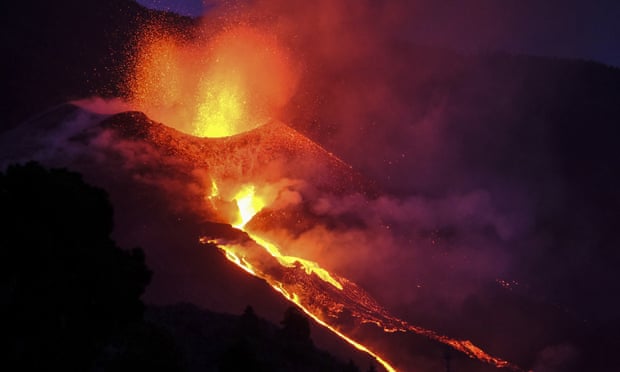The erupting volcano on Spain’s Canary Islands has blown open two more fissures, with authorities reporting “intense” activity in the area.
The new fissures, about 15 metres (50 feet) apart, sent streaks of fiery red and orange molten rock down toward the sea, parallel to an earlier flow that reached the Atlantic Ocean earlier this week.
The Cumbre Vieja volcano was “much more aggressive”, almost two weeks after it erupted on the island of La Palma, said Miguel Ángel Morcuende, the technical director of the Canary Islands’ emergency volcano response department.
Overnight, scientists recorded eight new earthquakes up to magnitude 3.5.
The eruption was sending gas and ash up to 6,000 metres into the air, officials said.
The prompt evacuation of more than 6,000 people since the 19 September eruption helped prevent casualties.
A new area of solidified lava where the molten rock is flowing into the sea extends over more than 20ha (50 acres).
Officials were monitoring air quality along the shoreline. Sulphur dioxide levels in the area rose but did not represent a health threat, La Palma’s government said.
However, it advised local residents to stay indoors. It also recommended that people on the island wear face masks and eye protection against heavy falls of volcanic ash.
The volcano has so far emitted some 80m cubic metres of molten rock, scientists estimate – more than double the amount in the island’s last eruption in 1971.
The lava has so far destroyed or partially destroyed more than 1,000 buildings, including homes and farming infrastructure, and entombed around 709ha on the Spanish archipelago off north-west Africa.






